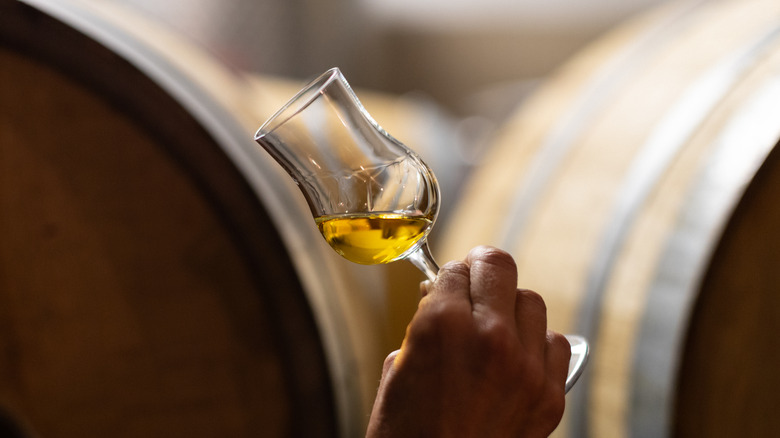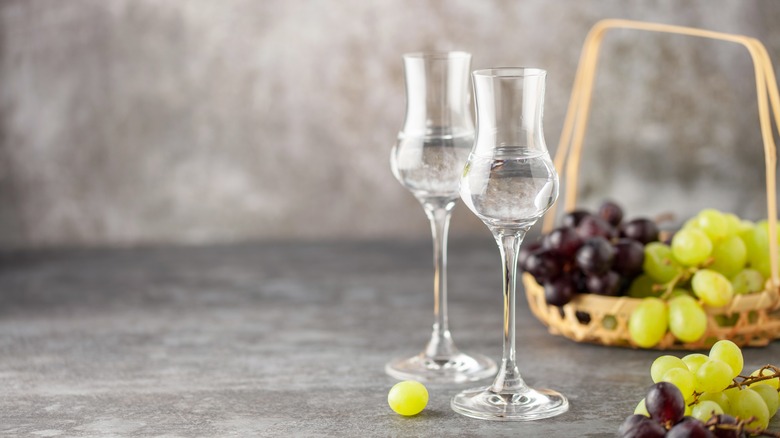The Absolute Best Way To Drink Grappa
Grappa is a unique form of alcohol made from the leavings of wine-making, as opposed to fresh whole grapes. The stems, seeds, and skins of the fruit — a combination known as pomace — are fermented and distilled using steam. Grappa is considered a grape brandy because it's made with the solids of the grape, while wine brandies are made from wine.
Grappa should be served in small amounts, ideally in tulip-shaped nosing glasses, but a shot glass will do. If the grappa is aged, it should be served between 61 and 62 degrees Fahrenheit. Chill the grappa if it's unaged. Both aged and unaged should be served neat — that is, with no ice.
The liqueur is considered digestif, so the best way to traditionally enjoy it is after a meal, supposedly to help with digestion. In comparison, an aperitif is consumed before a meal to stimulate your appetite. You may have heard of other Italian digestifs such as limoncello, amaretto, and sambuca or the less commonly known fernet.
What does grappa taste like?
The taste of grappa depends upon many factors but most notably hinges on its age. Younger grappas have a stronger character and will still typically demonstrate the sharp characteristics of the grapes they're made from, but aged grappas will have a more subtle flavor. For younger varieties, the strong spirit flavor can mask the more subdued notes of the drink.
There are several ways of incorporating grappa's unique taste into other beverages and foods. Add a splash of grappa to coffee for what the Italians call a caffè corretto ("corrected coffee") or add it to fruitcake batter to elevate its flavor.
Like San Marzano tomatoes and Parmesan-Reggiano cheese, Italian grappa is protected by European law. Only grappa made in Italy can be called Italian grappa. These protections help consumers find the most authentic Italian products and require producers to maintain the longstanding customs of Italian culture.

